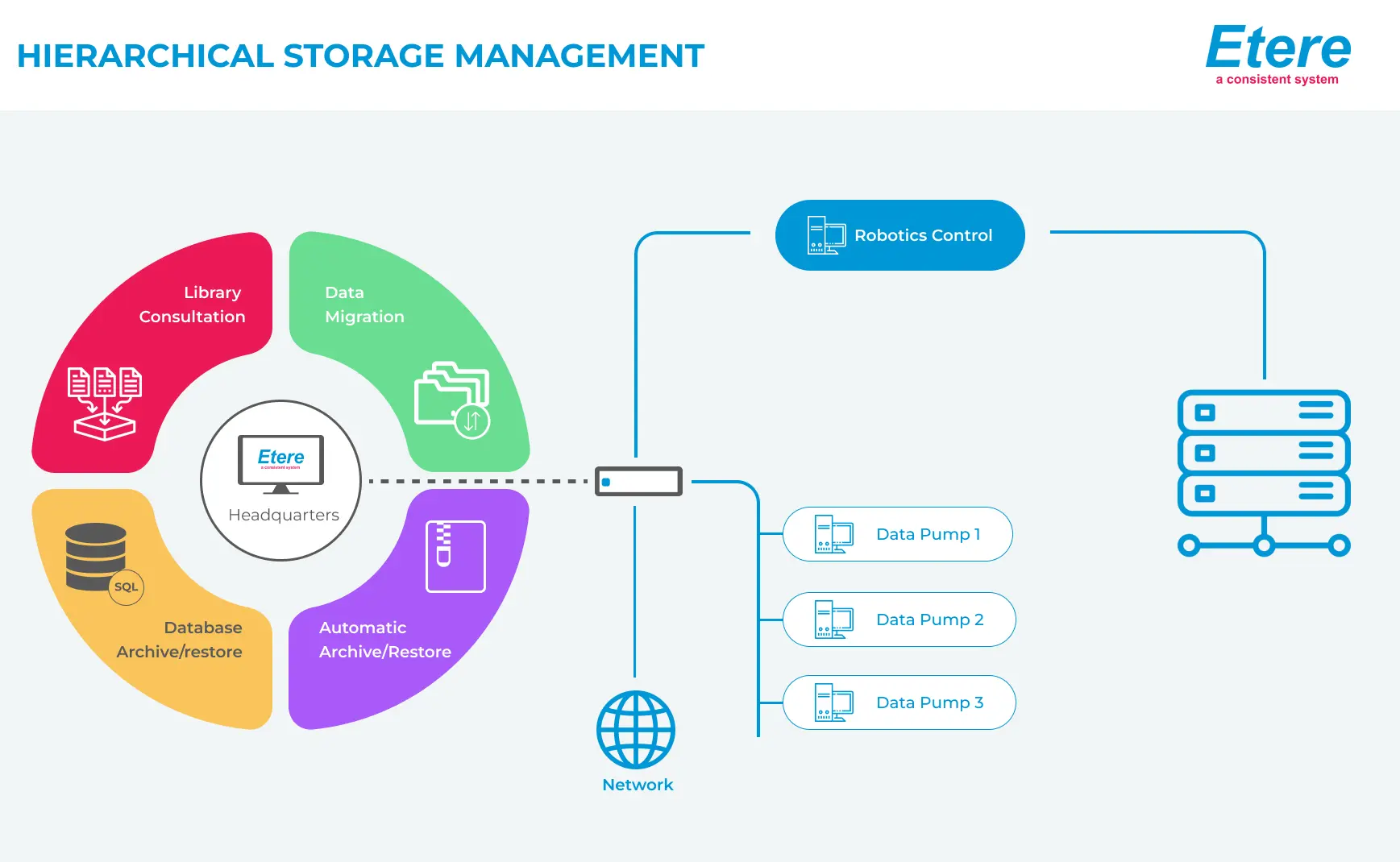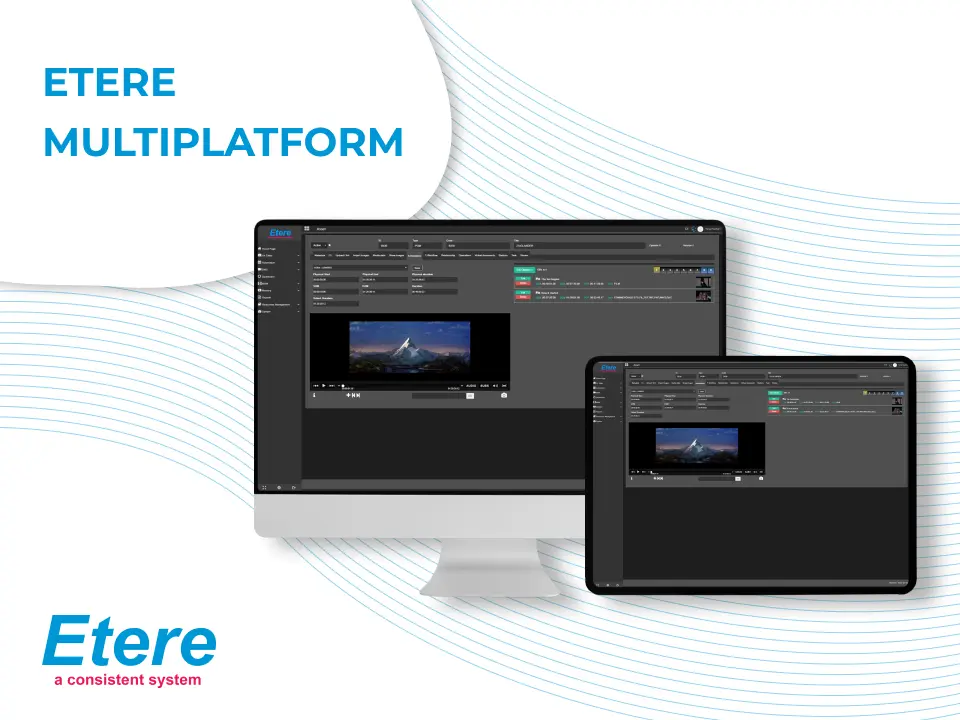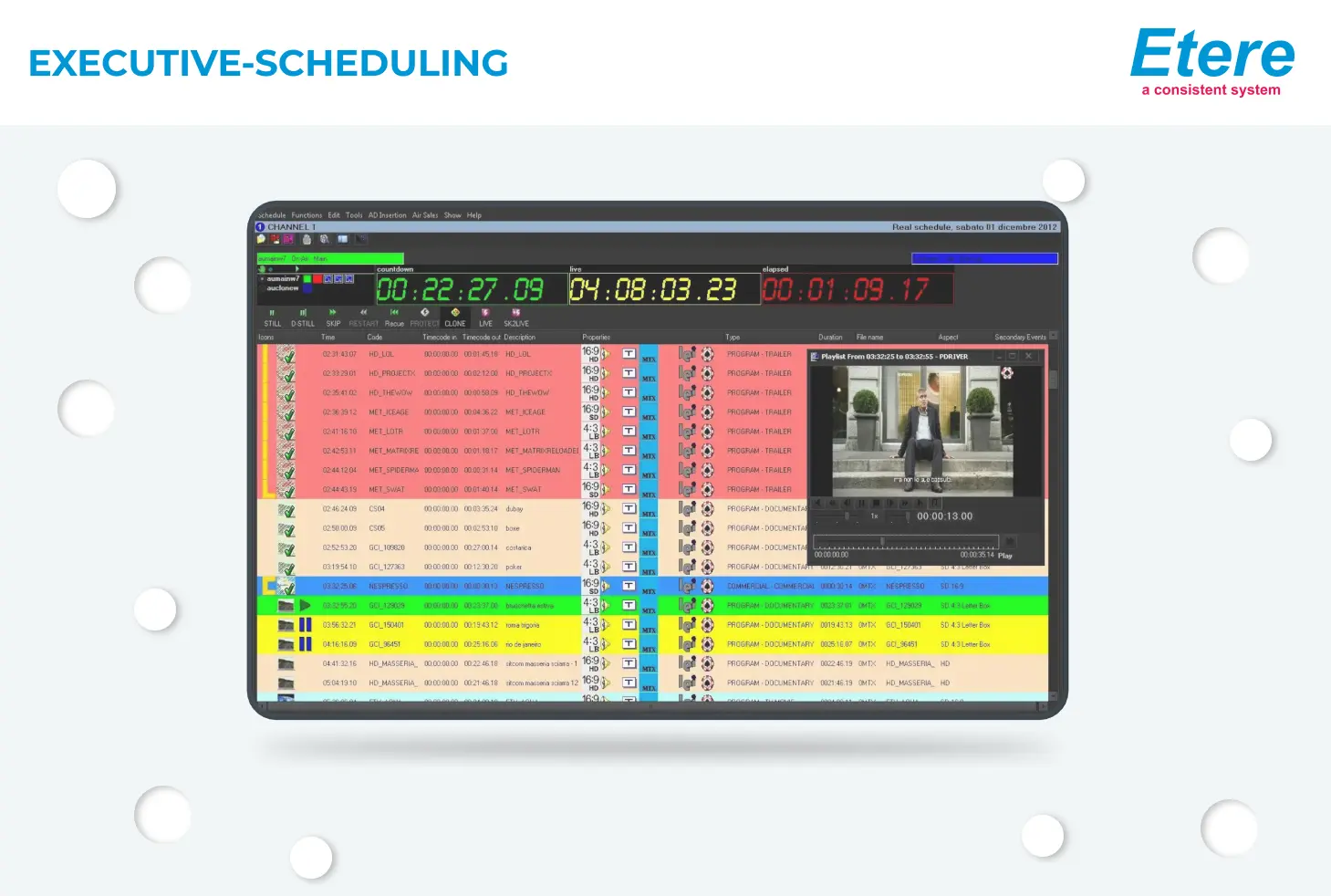Disney Channel: A Smooth Upgrade to an Enterprise Workflow
05 August 2015Disney Channel is a cable and satellite television network owned by the Disney-ABC Television Group division of The Walt Disney Company. The Disney Channel International Networks is a global portfolio of more than 90 kid-driven, family inclusive entertainment channels and/or channel feeds available in over 160 countries and 30 languages.
For more information, please refer to the attachment.
Introduction
Disney Channel is a cable and satellite television network owned by the Disney-ABC Television Group division of The Walt Disney Company. The Disney Channel International Networks is a global portfolio of more than 90 kid-driven, family inclusive entertainment channels and/or channel feeds available in over 160 countries and 30 languages. The channel specializes in television programming for children through original children's television series and movies, as well as third-party programming. It is marketed mostly toward young children, with the exception of their weekend primetime block that is aimed at pre-teens and teenagers ages 9–15, and the Disney Junior programming block aimed towards children ages 2–5.
Disney Channel Italia is the Italian version of Disney Channel. Disney Channel Italy also includes a +1 hour time-shift service (Disney Channel +1), a channel for pre-school children (Playhouse Disney), a cartoon channel (Toon Disney), an English-audio channel with subtitles (Disney in English), and a channel for male teenagers (Disney XD). Soon, it will launch Disney Cinemagic, which it will replace Toon Disney.
In order to streamline its global production system, Disney Channel is planning to move to a fully integrated tapeless and paperless workflow. Due to the sensitive nature of an upgrade process, the best of expertise is required; in these terms Etere will support the station on this process through a progressive integration of the new modules that will replace a series of current independent and non-integrated systems. An extreme modular solution will be provided to tightly integrate existing equipment and systems, thus permitting to achieve a level of productivity that will consistently meet the expectations set on the upgrade process.
This paper illustrates the upgrade process proposed by Etere for an integrated workflow based not only on a world-acknowledged system but on a hard-earned expertise on the implementation and maintenance of media asset management systems all around the world, providing access to any file, at anytime and most important, with a the maximum of speed, characteristics that will ensure the improvement of each single broadcasting area of Disney channel with a wide set of cutting edge applications that goes from an accurate contents management to an automatic delivery.
2. CURRENT SCENARIO
Nowadays, the broadcast workflow of Disney Channel involves the following aspects:
2.1 Media Library
The station’s library holds all the assets and data, whether used or not for the on-air transmission, including DVD, tapes, etc. The library is divided into the following four primary areas:
■ Program Library: Programs, movies, series, specials (i.e. short films), interstitials (short elements usually contracted by third-parties)
■ Presentation Library: All self-produced assets (e.g. promo, bumper, billboard, ident, station ident and all non-contractual assets since they are self-produced)
■ Promotion Library: Local promo jingles, Sky cross promotions
■ Commercials Library: Spots and frame spots
Program Library: Programs, movies, series, specials (i.e. short films), interstitials (short elements usually contracted by third-parties)
■ Presentation Library: All self-produced assets (e.g. promo, bumper, billboard, ident, station ident and all non-contractual assets since they are self-produced)
■ Promotion Library: Local promo jingles, Sky cross promotions
■ Commercials Library: Spots and frame spots
The station manages different versions for each asset (e.g. DVD version, TX version, TX No-Credits version, TX 4:3 version, TX 16:9 version, TX with short credits, source master, asset), where only the “asset” version has real TC references to be used for the on-air transmission. Among all the assets managed by the station, only some are marked as ‘to broadcast’ (i.e. active).
2.2 Strategic Playlists
The so called ‘strategic playlist’ will be internally created, managed and planned by Disney Channel Italia (without inputs or forced changes from UK).
The strategic playlist is managed using an excel worksheet which accompanies the real playlist from the start to the end. The strategic playlist is generated about 45 minutes before the on-air transmission; data is then manually reinserted in Vision.
2.3 Advertisements
Disney’s advertisements are managed by the SKY agency, which sends a ‘strategic playlist’ with a month in advance. Billboards are always managed as the last on-air element before a movie and/or as the first on-air element after the movie’s end.
For the management of advertisements, Disney Channel creates assets with a unique progressive code which differs from the one used by Sky for the programming. When the returned playlist is imported, the Sky assets (if not existing) are newly created inside the database. All assets contain both, the Disney and the Sky codes. Promos and fillers are manually inserted viewing the strategic playlist until completing the broadcast playlist filling up.
2.4 Broadcast Playlists
In Vision, the station manages templates used by a self-produced tool that inserts secondary events, said tool inserts also the on-air code of a crawl which is generated and controlled by the playout system.
Another self-produced external tool undertakes the playlists exported by Vision (in Harris LST format), “translating” and “remaking” it adding the primary and secondary events based on preset station rules in order to obtain the one that will be the real broadcast playlist. This tool provides proper functions that allow operators to interact independently with the playlist’s secondary events, without passing back (if necessary) by the Vision.
Disney transmits also over the Sky and Mediaset DTT platforms; therefore, the same playlist is undertaken by the external tool which searches for the station promos and replace them with the ones dedicated to either Sky or Mediaset. Therefore, another two broadcast playlists are generated from the station’s main playlist.
2.5 Other operations
An operator is committed to the censorship, eliminating the scenes considered not suitable for transmission; being, from this point of view, fully self-sufficient from the head office. The document used for the censorship is also used for writing the basic metadata that describes the scenes within the asset and indicates after how many minutes/seconds they appears with respect to the event start. Moreover, assets are also linked to the proper keywords such in a way that –if required- they can be searched from the playlist all the events scheduled in future playlists which matches a certain keyword in order to replace them (e.g. princess Diana death. The next two weeks they won’t be scheduled events relayed to ‘princesses’, ‘deaths’, etc.).
At this moment, the SIAE is managed by an external society in charge of integrating ROF and/or ROM data regarding the events in the playlist, being also responsible of issuing an appropriate registry. Furthermore, the subtitles management is performed by an external company which receives a low-resolution copy of the related media.
2.6 Assets Management
Assets can be received in either ProRes or Xdcam format. The station has a currently enabled AdStream service for receiving contents. Once the location, the quality control and the on-air file preparation is done, a copy of the file is send back to the head office.
The station manages an XLS file where are contained manual notes regarding the video reception date, the audio reception date, the date and person who performed the location, the date and person who performed the quality control, the formats generated from the original file and the person who was in charge (for ProRes formats also an Xdcam 16:9 and SD 4:3 versions are generated, for Xdcam 16:9 formats also an SD 4:3 version is generated, for SD 4:3 no other file is generated).
Currently, ARC and AFD are managed at a video level, that is, a properly real file is generated; being the same for the audio/loudness leveling. For the same previous reasons, the Quality Control and the check of time code markings is performed using different files even of the same content (e.g. different formats), thus resulting in a heavy and time-consuming operation without an appropriate protection against errors.
A STK 3000 library is used along with LTO4 cartridges as the deep archive, being currently controlled by Diva. The station also manages an Omneon Spectrum video server with one MediaPort 5000 and two new MediaPort 7000 intended to be used for the automatic AFD up-conversion into the same format (i.e. SD to SD).
Graphics are managed by a Vertigo system, moreover, FlexiCart cart machines are no longer used for ingest but only as “spare devices” for going on-air in case of maintenance on the playout system.
2.7 Rights Management
Rights and all the operations related to the payment and counting of programs runs and re-runs are managed by Vision in a completely independent way with respect to everything else.
3. ETERE PROPOSED UPGRADE
The system upgrade is a complex process that will change all current workflows which –at today- are almost fully independent and not integrated at all into a system based on a single database holding and managing all the station’s data under an all-around approach.
It is due to the system complexity and its currently operating and unstoppable state that the upgrade process must be performed across progressive stages, where each one of them will allow to improve the efficiency and quality of the final product and services.
In this chapter, there will be a description of one of the possible scenarios, the one considered as the baseline of the project.
3.1 Replace the current Vision workflow
The first –and possibly more complex- stage of the project consist in setting up a MERP (Media Enterprise Resource Planning) platform that will be preparatory for the following stages and the addition of integrative functions and modules. The tasks comprised in this stage are following detailed:
i) Introduction of a core Etere MAM system: This database will replace the current one present in Vision and unlike it, the new database will be linked to real files, allowing to:
■ Deliver correct data related to the presence of files, metadata and markings.
■ Diffuse the low-resolution preview (proxy),
■ Check files without handling them, letting Harris and Diva intercommunicating directly. In the latter way, Etere MAM will be inserted progressively and effectively into the infrastructure to take charge of the transcoding services, audio leveling and NLE transferring.
ii) Introduction of an Etere strategic playlist: This playlist will be used instead of the current excel worksheets which are independent and disconnected from the main system.
iii) Playlist editing: The playlist will be drawn up using Etere until the LST file is generated.
iv) Playlist post-processing: The LST file generated by Etere will be ready for being post-processed using the current tools.
This first stage allows replacing Vision and reaching a streamlined service improved for controlling and accessing files, being inserting in parallel to the current workflow until the final transmission.
3.2 Media Asset Management
At a second stage, the following media asset management operations will be performed:
i) Etere MAM will be in charge of the entire management and handling of files, excepting the archiving and on-air processes. ii) Etere will implement a worksheet service managed via workflow to generate work orders and keep track of their results. iii) Integration of notifications for sending an email to the process responsible each time a work is ordered or its state is changed. iv) Inclusion in Etere of metadata and the approval services management. v) Insertion of the subtitling management, including the generation of subtitles and the re-generation of subtitled files. vi) Direct management of the media repositories as well as the sending/reception of existing (signant) and new files (tapeless reception). vii) Integration and management of content related rights.
3.3 Control of the Digital library
The third stage consists in the management of the digital tape library use by the station, the STK 3000.
3.4 Playout integration
The current Harris playout system will be integrated by either redesigning the Etere interface tools or replacing it with an Etere playout.
Etere will implement an “Integrated Media Management” solution able to store and transparently manage the facilities’ archived material over the long term. Etere’s solution consist of a MAM system intended to be the core of the central archive, providing media archive management and delivery services to the global system including instant access and delivery of media files; all this media management is based on a file-based workflow framework featuring a wide range of function-specific workflows for acquisition, production and playout with additional integration capabilities.
Operations related to all contents present in the station are cemented on a file-based workflow framework featuring a wide range of function-specific workflows for ingest, production and playout with additional traffic capabilities. The modules that Etere will implement across the system are briefly described below:
■ Etere MAM, the best solution for indexing and editing a huge amount of media assets, it provides tools for an easier metadata insertion and video cut and merge,
■ Etere HSM, an automatic tape-based storage system for long-term management archive,
■ Etere Media Manager, the enterprise workflow-based media manager that guarantees timing and effectiveness on media transfers between devices,
■ Etere Automation, a fault-tolerant system to automate the playout of scheduled contents,
■ EtereWeb, a secure and robust threshold to the station’s outside world, a web-based interface that will permit a tight integration with NLE systems and remote facilities (e.g. post-production),
■ Etere Scheduling, the module for the draw up of on-air schedules which integrates a wide range of utilities (e.g. import/export, reporting, statistics, etc),
■ Etere Air Sales, a robust solution for Traffic departments which permits to maximize the productivity of the commercial on-air planning, from an initial proposal to a final invoice.
■ Etere BMS, for a reliable management of broadcast rights, guaranteeing that licensing terms and regulatory conditions regarding purchased programs are not violated.
4. ETERE ARCHITECTURE
Etere is based on a distributed architecture which allows different modules to run on different workstations interconnected via a local area network. All system configuration parameters, security roles, user data, and pre-defined rules are stored in a reliable SQL database supporting backup and redundancy operations.
4.1 A Distributed System
ETERE is a distributed, modular and fully integrated broadcasting system composed by a set of applications specifically oriented to efficiently perform each complex phase of the broadcasting chain synchronously within the same database environment, being all managed by suitable user-defined workflows that ensure an efficient overall system controlling.
Etere’s distributed architecture allows achieving a top-level availability of resources and reliability of operations across the entire broadcast workflow thanks to its redundant capabilities to improve the fault resilience on any hardware or software failure.
4.2 Multi-level Storage Hierarchy
Etere systems improves the media management by introducing a multi-level storage management consisting in the use of different storage levels based on the frequency of use of the files stored on them. For example, data files which are frequently used will be stored on video servers (i.e. online servers) whereas those which are not used for a certain period of time (e.g. typically a few months) will be eventually archived in tapes (or any other long-term storage mean) and then automatically restored -to video servers- every time they are required by the broadcast playlist.
Etere offers a hierarchical storage management of media content, it allows to organize in user-specific levels an unlimited number of content versions with different access times (e.g. video servers, near-line servers, archive servers), being all these levels available to the operator under a simple and user-friendly interface:
Moreover, media holders (i.e. asset forms) can be organized –along with their related information-under a hierarchical structure based on Parent-Children relationships, thus allowing, for example, to handle different versions of a same asset and all the assets derived from them:
4.3 User Access Levels
Etere provides stations with a ‘Rights Management Tool’ to control and track access to its various modules and functions, with it, stations will be able to freely assign (grant or deny) access to specific user groups (i.e. roles to which one or more users belongs to), thus allowing to set different mixtures of access levels for each group.
Etere allows managing different –and fully customizable- access levels for users which form part of the system, with Etere; it will be possible to configure specific access rights not only for different users, but also for different stations.
4.4 Rights-based Operations
All the functions provided by an Etere system (e.g. quality control, event scheduling, program playback, etc.) falls under different categories according to their nature (e.g. media manager, air sales, automation), the availability of these functions is determined by the ‘Right Management Tool’. Thanks to this tool, stations will be allowed to reflect into the Etere system the actual way in which rights are managed within the station facility, for example, scheduling operators will be allowed to use only those modules to which they are authorized to use, including (or excluding) some sensitive functions intended to be managed by system administrators.
 Back
Back





